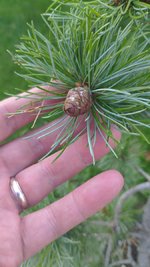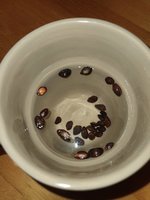Hi all.
Apologies, I searched the forum for this one but couldn't find a general consensus.
I picked up some pinus parviflora seeds online a few weeks ago. They're in the fridge in the sealed bag they came in at the moment.
What is the best method for germinating these? Some say take them out to room temperature for a week, into a damp sterile mix for 60days, then into fridge for 90 days. Others say damp mix in fridge for 30 days.
The seeds were hard to come by so want to try give them the best chance. I don't want them germinating too early either.
Thanks in advance!
Apologies, I searched the forum for this one but couldn't find a general consensus.
I picked up some pinus parviflora seeds online a few weeks ago. They're in the fridge in the sealed bag they came in at the moment.
What is the best method for germinating these? Some say take them out to room temperature for a week, into a damp sterile mix for 60days, then into fridge for 90 days. Others say damp mix in fridge for 30 days.
The seeds were hard to come by so want to try give them the best chance. I don't want them germinating too early either.
Thanks in advance!




